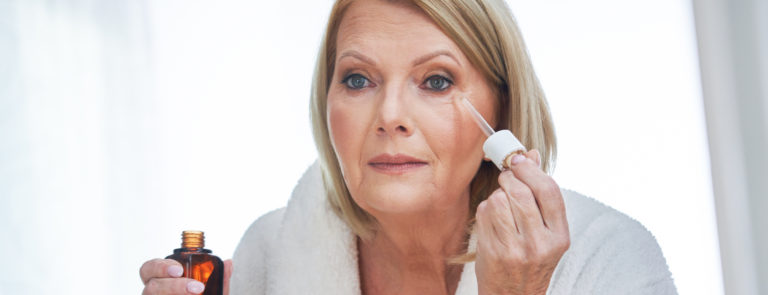Retinol is a common ingredient in many skincare products – but what exactly is it, and how does it work? Let us reveal the secrets of this miracle ingredient and explain how to use retinol to achieve more youthful-looking skin.
So, what is retinol?
Put simply, retinol is a form of retinoid – a naturally-made substance that’s derived from
vitamin A.
1 It has several different functions when it comes to caring for the skin. These include:
- Stimulating collagen production and helping plump up the skin
- Aiding cell regeneration, so skin looks healthier
- Reducing the appearance of wrinkles and fine lines
Retinol is also thought to have some success at fading scars, reducing pigmentation, and eliminating blemishes. That means its equally as good for skin that’s prone to breakouts or other conditions.
2
How to use retinol
Due to retinol’s ability to support collagen production and smooth out fine lines, it’s a significant ingredient in many skin care products.
3 This includes everything from eye creams and serums to healthy-ageing moisturises.
If you’re a newbie to retinol, choose a product which contains a low percentage and only use it a few times a week.
4 Retinol can be quite a potent ingredient, so you’ll want to get your skin used to it before you start using it long term to slow down the signs of ageing.
5 Read more here: '
Is retinol safe?'
When it comes to how to use retinol, make sure you first cleanse and dry your skin. Next, squeeze out a pea-size amount of your chosen retinoid and massage it all over your face and neck using your fingertips.
6 Retinol can be used as part of your usual skincare routine. However, you may want to try only applying it every other day.
Remember, retinoids should always be followed up with a moisturiser. One containing SPF is best as this will give your skin even better protection from sun damage which can lead to premature ageing.
7
When to avoid using retinol
As retinol can be quite a drying ingredient, it may not be suitable for those who already suffer from dry skin. It can also be quite a potent product, so you’ll want to be cautious if you have sensitive skin or certain skin conditions.
8
Possible side effects of retinol include flaky skin, redness, and itchiness. To avoid these, read the instructions on your chosen product or speak to a skincare specialist for advice.
It’s also a good idea to not use other potent products, like salicylic acid, at the same time. This might be too much for your skin to handle.
9
Keen to see the effects of retinol for yourself? You’ll discover products containing this hero ingredient in our
face oil and serum range.
Shop Serums
Expertly reviewed by:
Last updated: 8 December 2020
Sources
1
https://www.dermstore.com/blog/how-to-apply-retinol/
2 https://www.webmd.com/beauty/qa/what-is-retinol-and-why-is-it-in-skin-care-products
3 https://www.webmd.com/beauty/qa/what-is-retinol-and-why-is-it-in-skin-care-products
4
https://www.vogue.com/article/retinol-retinoids-guide-fine-lines-sun-damage-healthy-glow
5
https://www.glamour.com/story/your-questions-on-retinol-answ
6
https://www.dermstore.com/blog/how-to-apply-retinol/
7
https://www.health.harvard.edu/staying-healthy/sun-damaged-skin-a-to-z
8
https://www.glamour.com/story/your-questions-on-retinol-answ
9
https://www.dermstore.com/blog/how-to-apply-retinol/



